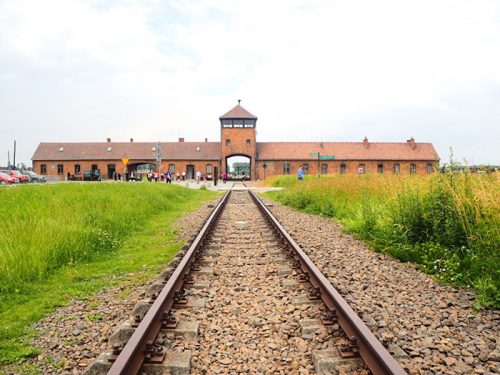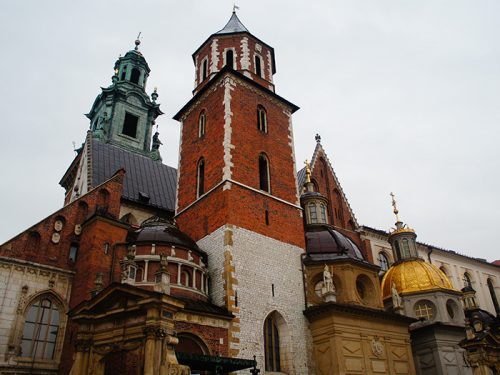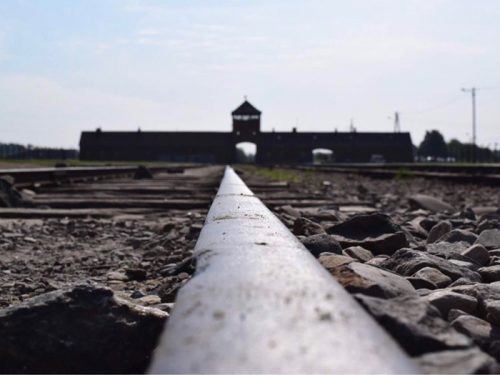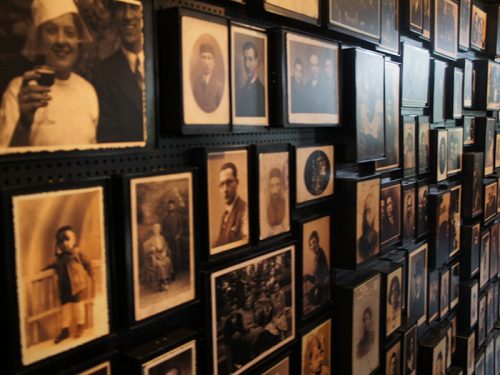Learn to Pass on Negative History – World Heritage Site: Auschwitz Concentration Camp –
Auschwitz Concentration Camp (Poland)

The Auschwitz-Birkenau concentration camp was built during World War II by Nazi Germany, the occupying power in Poland at the time. Many people, including Jews, were held there as prisoners of war, forced to work, and then massacred. Why did the Holocaust, a brutal genocide that claimed more than six million lives across Europe, occur? Each year, Peace Boat Voyage conducts study tours to learn about this horrific history and postwar attitudes toward war responsibility, and to apply them to the future.

Jewish life in the former capital of Poland
Krakow, a city in southern Poland, once flourished as the capital of the Kingdom of Poland for over 500 years. Today, the city still retains many buildings that remind us of its history, and the Old Town area is registered as a UNESCO World Heritage Site. During the Second World War, the city came under the control of Nazi Germany, but miraculously escaped the wartime destruction. However, there were many Jews living in Krakow and they faced serious persecution. Walking around Kazimierz, the old Jewish quarter, you can feel the wartime atmosphere. It was also the location for the movie “Schindler’s List,” which depicts Oskar Schindler’s efforts to save the lives of Jews.

The camps that still carry the negative history
The Auschwitz-Birkenau concentration camp was the site of genocide committed by Nazi Germany during World War II. It consists of two camps, Auschwitz and Birkenau, and is now open to the public as a museum to tell the story of this war crime to future generations. This was the final destination for people taken from all over Europe. Among millions of people who were brought here, very few people survived. Our guide is Mr. Takeshi Nakatani, the only official Japanese guide at the museum, and he shows us around.

In front of the buildings and artifacts that have been preserved as they were at the time, Mr. Nakatani not only explains the events that took place in the camps, but also takes us through the social issues that we face today, the energy of mass psychology that cannot be controlled by individual people, and the weakness and nature of human beings. Mr. Nakatani guides us quietly and carefully so that we can think calmly rather than appealing to our emotions. As we walk around the facility, listening to Mr. Nakatani’s stories, it comes to life before our eyes that all the lives lost were real people with names.

The Reality of the Camps
The motto “ARBEIT MACHT FREI” (Work hard and you will be free) is written on the archway at the entrance of the camp, which has become one of the symbolic spots of the concentration camps under Nazi Germany. The motto gives the impression that people could be liberated if they worked hard, but the reality of the camps was that they were desperate, always facing death. In the exhibition area of the camp, there is a large display of clothes, shoes, and dishes brought by the people who were interned at that time. If you look carefully at the trunks on display, you can see that each one is marked with a name, address, and freight car number. This was another way of reassuring the inmates that they would one day be able to return home.

Interacting with local young people
The Auschwitz-Birkenau Museum is located in the city of Oswiecim. As part of the Nazi regime’s policy, the name of the place was changed to the German word “Auschwitz”, and that name has become popular. During the tour, participants have time to interact with local students. “We are born in this town where we enjoy rich nature and beautiful churches. There is a movie theater and a skating rink as well. Please don’t take home only the image of Auschwitz from our beloved town,” the students says quietly. This is the moment when you realize how difficult it is to pass on history.
Auschwitz as a Signpost for Peace
At times, around the time of this tour, students from the University of Tübingen, Germany, join our voyage to conduct a program on the theme of Germany’s postwar history. Historical awareness in Germany is often a topic of discussion, but there are not many opportunities to hear directly from those who were born and raised in Germany. In the words of the students, we can see how Germany has built a relationship of trust with the international community by confronting the history of Nazi perpetration and never looking away. Going to the site, meeting various people, sharing time, and having dialogues – these are irreplaceable experience that is possible only on a voyage around the world.
PHOTO: PEACEBOAT, yuruki Shiho
